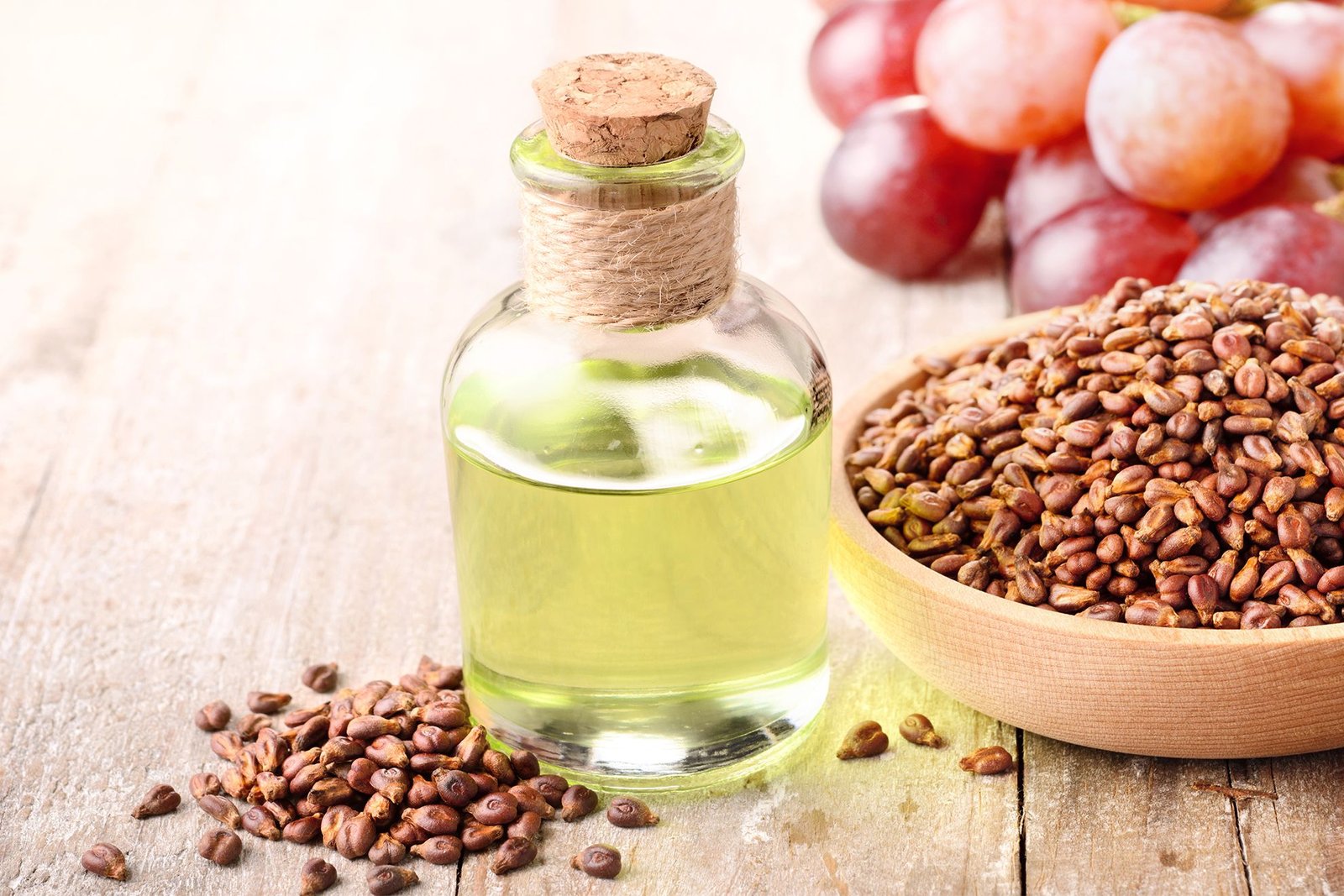What is Grapeseed Oil?
Grapeseed oil is a vegetable oil obtained from the seeds of grapes, typically from those used in winemaking. It’s a by-product of the winemaking process and has become a popular supplement. Grapeseed oil is a versatile cooking oil derived from the seeds of grapes, particularly those used in winemaking. Extracted through a process of cold-pressing or solvent extraction, it boasts a light, neutral flavor and a high smoke point, making it suitable for various culinary applications, including frying, sautéing, and baking. Rich in polyunsaturated fats, vitamin E, and antioxidants, grapeseed oil offers potential health benefits such as supporting heart health and reducing inflammation. Additionally, its mild flavor and smooth texture make it a popular ingredient in skincare products, including moisturizers, serums, and massage oils, due to its hydrating and non-comedogenic properties.
What is the history of Grapeseed Oil? Where did it come from originally?
Grapeseed oil has been used for over 6,000 years in traditional folk healthcare. It’s mentioned in the Bible as an “ancient healer” and was used by Daniel in the Old Testament. The oil can be traced back to the early days of grape cultivation and wineries, with documented use around the time of the ancient Greeks, Romans, and Egyptians. Grapeseed oil originates primarily from wine-producing regions around the world, with its roots tracing back to ancient civilizations such as Egypt and Greece.
Historically, winemakers in these regions extracted oil from grape seeds as a byproduct of the winemaking process. Today, major producers of grapeseed oil include countries with significant wine industries, such as France, Italy, Spain, and the United States. These regions cultivate specific grape varieties suited for winemaking, resulting in abundant grape seeds that are then processed to yield the versatile and nutritious grapeseed oil enjoyed in cuisines and skincare products worldwide.
Where is Grapeseed Oil produced in the world?
India is the leading country in grapeseed oil production, producing as much as 350,000 tons of grapeseed oil annually, accounting for more than 75% of total worldwide production. Y oil is produced in various regions around the world, with major producers including countries known for their wine industries. France, particularly regions like Bordeaux, Burgundy, and Champagne, is a significant producer due to its extensive vineyards. Italy, renowned for its winemaking heritage, also produces substantial quantities of this oil, notably in regions such as Tuscany and Piedmont. Spain, with its vast vineyard acreage in regions like La Rioja and Catalonia, is another major producer. Additionally, countries like the United States, Argentina, Chile, and Australia contribute to global production, reflecting the widespread cultivation of grapes for both winemaking and the extraction of grapeseed oil. Other major producers include China and Brazil.
How do you make/process Grapeseed Oil?
The process of making grapeseed oil involves several steps:
1. Soaking and De-skinning: The seeds are soaked in water for 24 hours to remove the skins8.
2. Extraction: The seeds are placed in a container and pressed to extract the oil.
3. Straining and Storage: The oil is then strained and stored for use.
The process of making this oil typically involves cold-pressing or solvent extraction of grape seeds. In cold-pressing, the seeds are mechanically pressed to extract the oil without the use of heat, preserving its natural flavor and nutritional properties. Alternatively, solvent extraction involves using solvents like hexane to extract the oil from the seeds. After extraction, the oil is refined, filtered, and sometimes deodorized to remove impurities and enhance its shelf life.
What can you do with Grapeseed Oil?
Grapeseed oil has numerous uses. It’s commonly used as a natural treatment for conditions such as constipation and skin ailments. It’s also used in foods, medications, and skin care products, as well as an industrial lubricant and biodiesel fuel component. In addition, it’s found in many natural beauty products. This oil serves as a versatile elixir for both hair and skin care. Its lightweight texture and non-comedogenic properties make it a favored ingredient in skincare products – imparting hydration and nourishment without clogging pores. When applied to hair and scalp, it moisturizes and conditions, enhancing shine and manageability. Beyond skincare, this oil shines in culinary realms. With its high smoke point and neutral flavor, it’s perfect for sautéing, frying, baking, and grilling. Its mild taste elevates homemade salad dressings and marinades, while also adding moisture and flavor to baked goods.
What are the health benefits of Grapeseed Oil?
Grapeseed oil is known for its health benefits. It’s approved by the FDA as a natural laxative to relieve temporary constipation. The oil is rich in ricinoleic acid, which has anti-inflammatory properties8. It’s also used to moisturize skin, aid in childbirth and labor, and to relieve arthritis pain. This oil, offers numerous health benefits due to its rich composition of antioxidants, vitamins, and fatty acids. One of its primary advantages is its high concentration of polyunsaturated fats, particularly omega-6 fatty acids. These acids are essential for brain function and may help lower the risk of heart disease when consumed in moderation. Additionally, this oil contains compounds like proanthocyanidins, powerful antioxidants known for their anti-inflammatory properties. These compounds may support cardiovascular health by reducing inflammation and improving blood flow.





